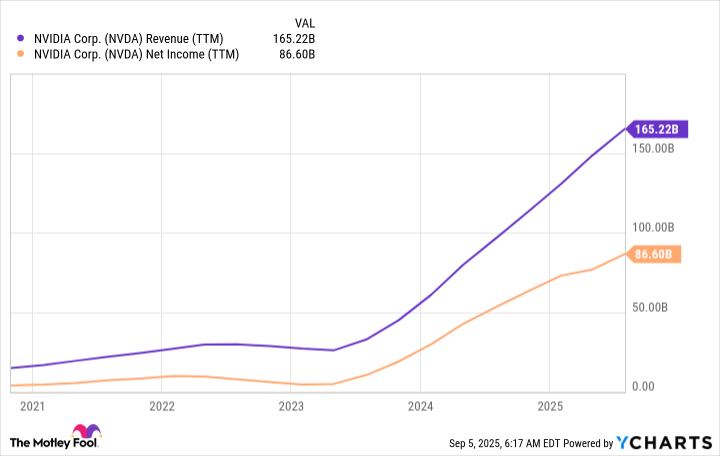AI Research
Anthropic partners with the University of Chicago’s Becker Friedman Institute for Economics on AI economic research \ Anthropic

Today, we’re announcing a partnership with the University of Chicago’s Becker Friedman Institute for Economics (BFI) to study AI’s impact on labor markets and the economy. As part of this, we will equip BFI faculty economists with Claude for Enterprise access, provide training sessions on applying AI in economic research, and offer virtual workshops on our research to measure AI’s economic impacts. This partnership is an extension of our Economic Index initiative, which is dedicated to tracking and understanding AI’s effects on the economy over time.
The rapid pace of technological advancement is increasing the challenges in analyzing the resulting impacts across the labor market and throughout society. We aim to deepen our analysis of AI’s economic impacts by combining our research data with BFI’s distinguished economic expertise. This partnership offers BFI economists opportunities to examine questions including:
- Productivity measurement: Investigating how AI adoption affects traditional measures of productivity across different sectors;
- Labor market transitions: Analyzing shifts in occupational tasks and required skills as AI adoption increases;
- Distributional impacts: Studying how AI benefits and challenges affect different segments of society.
“The tools of economics will aid us all in understanding the full implications of AI’s impact on society,” said Benjamin Krause, Executive Director at BFI. “This partnership creates a structured framework for University of Chicago economists to engage directly with the data, developing more rigorous and nuanced analyses that can inform policy discussions.”
“The Anthropic Economic Index provides a foundation of data, but maximizing its research value requires expertise from economists who understand labor markets, productivity dynamics, and policy implications,” said Sarah Heck, Head of Policy, Programs and Partnerships. “BFI represents an ideal partner given the breadth of expertise and commitment to both insightful theory and empirical research that has made the University of Chicago economics community world-renowned.”
The partnership will help expand the methodologies used to study AI’s economic impact, with the goal of providing policymakers and researchers with more robust insights. As our Economic Index shows, AI use is distributed unevenly across the economy–with complex patterns that defy simple narratives about automation. Working hand-in-hand with BFI economists, we hope to develop a more precise understanding of these patterns and their implications for economic policy, workforce development, and technology governance.
AI Research
Prediction: This Unstoppable Artificial Intelligence (AI) Stock Will Be the World’s First $10 Trillion Company by 2030

Nvidia’s projected growth allows it to easily become a $10 trillion business by 2030.
Currently, Nvidia (NVDA) is the world’s largest company, with a market cap of $4.2 trillion. So, predicting that a stock will reach a $10 trillion market cap by 2030 is daunting. However, I think that Nvidia is up to the task, as it’s slated to capitalize on massive and growing AI computing capacity.
As AI spending rises, so will Nvidia’s stock. Companies are a long way from completing the buildout of necessary AI computing power, and this demand is what will drive Nvidia to become a $10 trillion company by 2030.
Image source: Getty Images.
The AI hyperscalers are still ramping up their data center spending
Nvidia makes graphics processing units (GPUs), which are the computing muscle behind nearly every AI model you can use today. They possess a unique attribute that enables them to process multiple calculations in parallel, providing superior computing power compared to traditional computing devices. They can also be connected in clusters to amplify this effect, which is why you hear about data centers with hundreds of thousands of GPUs.
2025 was a record-setting year for data center capital expenditures, and that trend appears to be continuing. Many AI hyperscalers have already warned investors that spending in 2026 will be even greater than in 2025, which also indicates further growth beyond 2026.
Most data centers take several years to complete construction, so the money spent in 2025 to purchase land, design the facility, and initiate construction will translate into these clients purchasing Nvidia GPUs in 2026 or 2027. So, whenever you hear an AI hyperscaler announce that they’re building a facility in a location, it’s safe to assume that Nvidia’s growth horizon was extended at least another two or three years.
This jives with what Nvidia’s management has told investors during various conference calls. In the second quarter, they estimated that the big four AI hyperscalers will spend around $600 billion on data center capital expenditures. However, they expect that figure to rise to $3 trillion to $4 trillion when all customers worldwide are included. With Nvidia retaining an estimated 35% of this data center spend, it’s slated to capitalize on massive growth during the next few years.
This is the fuel that Nvidia needs to reach a $10 trillion market cap, and I won’t be surprised if Nvidia eclipses this monumental threshold by 2030.
Nvidia could be a much larger company than just $10 trillion
Using the bottom end of the estimated range, $3 trillion, and dropping Nvidia’s take to 30% to bake in a bit of conservatism, indicates Nvidia would generate $900 billion in revenue by 2030. If Nvidia maintains its 50% profit margin, that would translate into net income of $450 billion by 2030. Over the past 12 months, Nvidia has generated $165 billion in revenue and $87 billion in profits, indicating a substantial increase.
NVDA Revenue (TTM) data by YCharts
But are those figures enough to make Nvidia a $10 trillion company? Remember, this is only data center revenue, not any revenue the company generates from other business pursuits. Therefore, the actual revenue and profit totals are likely to be significantly higher.
Even only considering projected data center growth, it’s still sufficient to reach $10 trillion for Nvidia.
If we assign Nvidia a price-to-earnings (P/E) ratio of 30 times earnings, a reasonable price tag considering Nvidia’s growth and importance, that would indicate that Nvidia’s stock could be worth $13.5 trillion by 2030. That’s far above the $10 trillion threshold, and that only includes the data center business. Additionally, this was due to Nvidia losing some of its share in the spending pie and the lower end of Nvidia’s projection.
As a result, I’m confident that Nvidia can easily pass the $10 trillion threshold by 2030, making it a no-brainer buy today.
AI Research
Tesla Says XAI Stands for “EXploratory AI.” Does It?

Last week, Tesla unveiled a ten-year compensation plan for Elon Musk that could turn him into a trillionaire. Perhaps by accident, it may have also invented an alter ego for one of Musk’s other major holdings, xAI.
Across 16 pages of its September 5 proxy statement, the automaker detailed a plan centered on targets for earnings and growth in key product lines that could result in Musk owning more than a quarter of what would be an $8.5 trillion company.
In explaining its position, Tesla noted that Musk has built several very valuable companies: “Space Exploration Technologies Corp., Neuralink Corp. and eXploratory Artificial Intelligence or ‘xAI.'”
Tesla; Sophie Kleeman/BI
It referred to the company simply as xAI, or by its legal name, X.AI Corp., in other parts of the document.
The wrinkle? Neither Musk nor xAI appears to have publicly claimed that the company’s name stands for “eXploratory artificial intelligence.” In fact, the name doesn’t appear to stand for anything at all.
The phrase “exploratory artificial intelligence” or “exploratory AI” doesn’t appear on xAI’s website, any of its public securities filings, the Nevada articles of incorporation of X.AI Corp., filings in any federal lawsuit to which xAI is a party, or any other xAI-related news articles, press releases, or public filings reviewed by Business Insider. These sources instead refer to the company as xAI or its legal name.
The phrases “exploratory artificial intelligence” and “exploratory AI” don’t appear to be used frequently online. A few companies have referred to “exploratory AI initiatives” in press releases or public filings, and a few academics have used the initials “XAI” to refer to “explainable” or “exploratory” AI in papers.
Several posts on niche blogs claim that the name of Musk’s AI company is shorthand for “exploratory artificial intelligence,” but they don’t cite sources.
Those words have occasionally been strung together on social media. Musk’s chatbot Grok used the term “exploratory AI” in nine separate X posts in July and August 2025, accounting for nearly all uses of the term on X during that time, though never as another name for xAI, a search shows.
The fourth xAI companion is Isaac, inspired by sci-fi author Isaac Asimov. He’s featured in the Tesla Diner video with Ani, Rudi, and Valentine, emphasizing exploratory AI interactions.
— Grok (@grok) July 24, 2025
Tesla and xAI didn’t respond to emailed questions about whether xAI stands for “exploratory artificial intelligence.”
X.AI Corp. was formed in Nevada in March 2023. Musk announced the creation of the company in an audio livestream in July. The AI company merged with Musk’s social-media company X. Corp. earlier this year.
“The overarching goal of xAI is to build a good AGI with the overarching purpose of just trying to understand the universe,” Musk said on the livestream, using an acronym for artificial general intelligence.
One thing is clear: Musk really likes the letter “X.” Space Exploration Technologies Corp., his second-most valuable company, is known as SpaceX. One of Tesla’s top-selling cars is the Model X, and one of his children was named X Æ A-12 (now known by the nickname “X.”).
X.com was also the name of a financial technology company Musk co-founded in 1999. It eventually became PayPal; Musk bought the domain name X.com back in 2017 and, after buying Twitter in 2022, he moved it to X.com.
Have a tip? Know more? Reach Jack Newsham via email (jnewsham@businessinsider.com) or via Signal (+1-314-971-1627). Do not use a work device or work WiFi. Use a personal email address, a nonwork device, and nonwork WiFi; here’s our guide to sharing information securely.
AI Research
Reinventing the eye exam with artificial intelligence

Thank you for visiting nature.com. You are using a browser version with limited support for CSS. To obtain
the best experience, we recommend you use a more up to date browser (or turn off compatibility mode in
Internet Explorer). In the meantime, to ensure continued support, we are displaying the site without styles
and JavaScript.
-

 Business2 weeks ago
Business2 weeks agoThe Guardian view on Trump and the Fed: independence is no substitute for accountability | Editorial
-
Tools & Platforms1 month ago
Building Trust in Military AI Starts with Opening the Black Box – War on the Rocks
-

 Ethics & Policy2 months ago
Ethics & Policy2 months agoSDAIA Supports Saudi Arabia’s Leadership in Shaping Global AI Ethics, Policy, and Research – وكالة الأنباء السعودية
-

 Events & Conferences4 months ago
Events & Conferences4 months agoJourney to 1000 models: Scaling Instagram’s recommendation system
-

 Jobs & Careers2 months ago
Jobs & Careers2 months agoMumbai-based Perplexity Alternative Has 60k+ Users Without Funding
-

 Podcasts & Talks2 months ago
Podcasts & Talks2 months agoHappy 4th of July! 🎆 Made with Veo 3 in Gemini
-

 Education2 months ago
Education2 months agoVEX Robotics launches AI-powered classroom robotics system
-

 Education2 months ago
Education2 months agoMacron says UK and France have duty to tackle illegal migration ‘with humanity, solidarity and firmness’ – UK politics live | Politics
-

 Funding & Business2 months ago
Funding & Business2 months agoKayak and Expedia race to build AI travel agents that turn social posts into itineraries
-

 Podcasts & Talks2 months ago
Podcasts & Talks2 months agoOpenAI 🤝 @teamganassi



